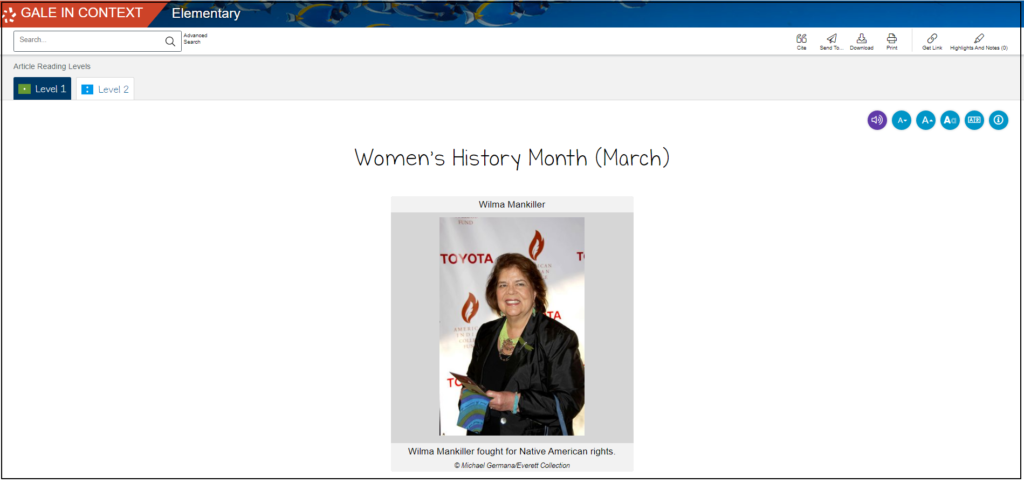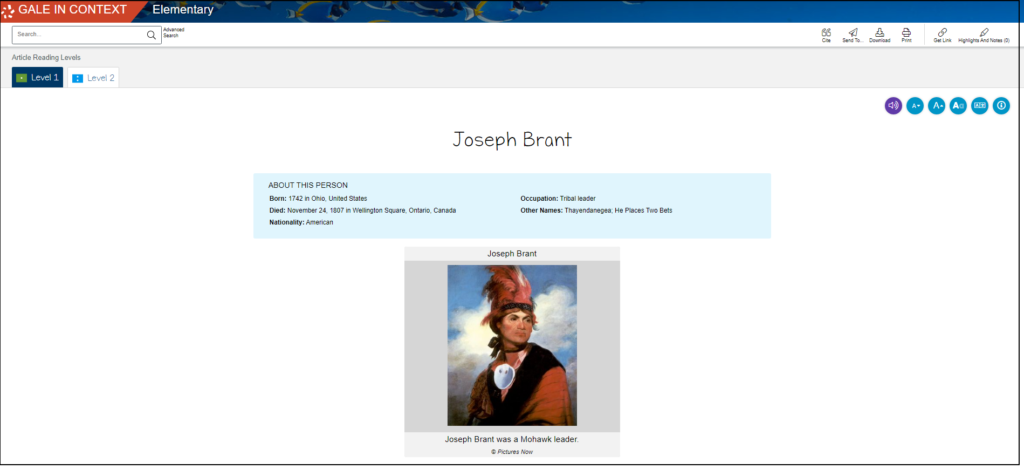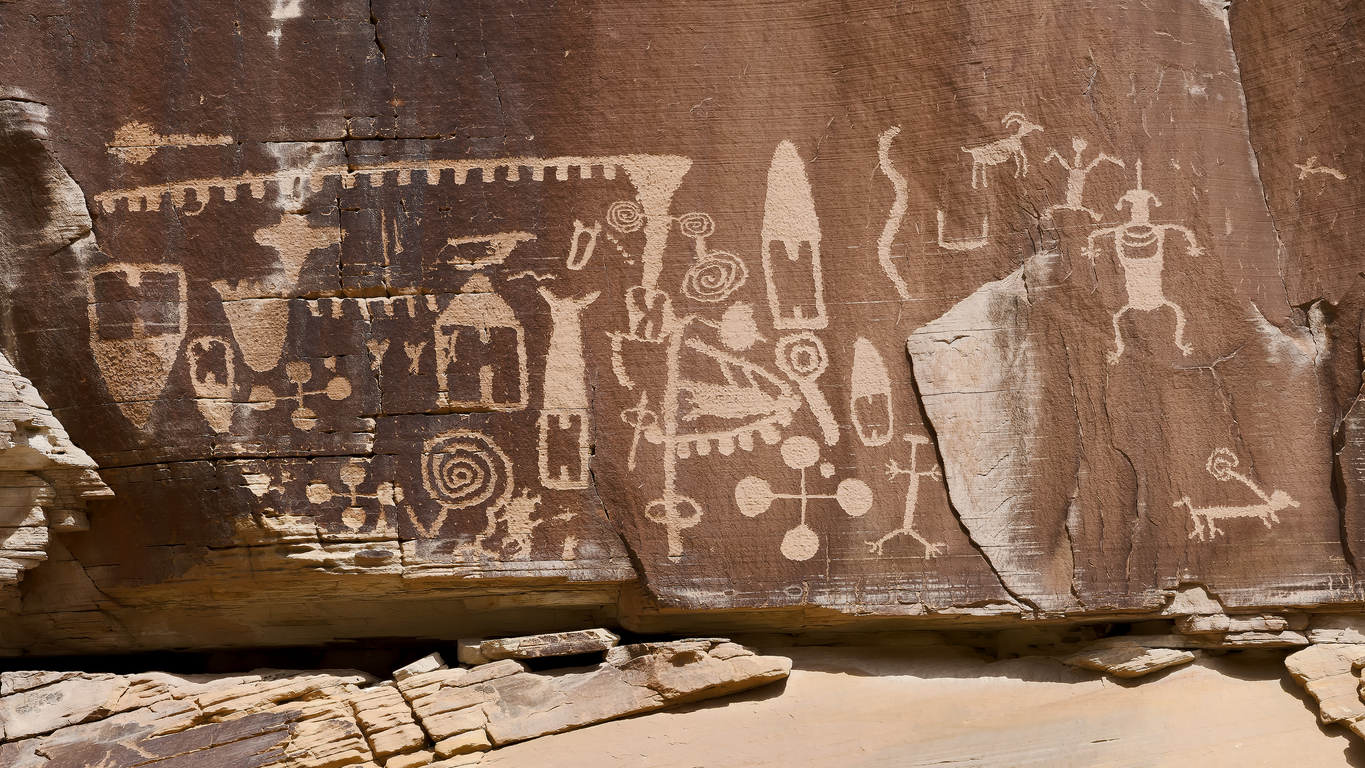| By Elizabeth Mohn |
In the United States, people celebrate Native American heritage throughout the month of November, and the Friday after Thanksgiving is an important time for commemorating Native American heritage and history because it’s Native American Heritage Day. In 2009, President Barack Obama signed a resolution that had unanimous support in the U.S. Congress to encourage Americans to learn about Native American history and culture. Teachers can help students learn about Native American history and culture with resources available in Gale In Context: Elementary.
One way to learn about Native American history is to learn about individual Native Americans who have helped shape American history and culture. Teachers can have students browse the new Wilma Mankiller portal to find different resources about this famous contemporary Native American leader. By reading her biography, students can learn about Mankiller, who died in 2010 after serving as the first female Cherokee chief. Teachers can help students learn more by encouraging them to explore the news articles about Mankiller. For example, teachers can help students read an article about Mankiller being celebrated on a U.S. quarter this year. Teachers can also guide students to explore the article about Women’s History Month. After students read the article, teachers can help them make connections between celebrating Women’s History Month and celebrating Native American Heritage Day. Teachers can extend the connection by having students access a new biography of contemporary Native American leader Deb Haaland.

Learning about contemporary and historical Native American leaders can help students better understand Native American history. Students who want to learn about historical figures can access new biographies of numerous historical Native Americans leaders. For example, they can learn about Joseph Brant, a Mohawk who fought in the American Revolution. In addition, they can read a new biography of Chief Plenty Coups, the last chief of the Apsáalooke (Crow) people. Students might also be interested in reading the new biography of Dull Knife, an important Cheyenne leader.

Native American Heritage Day gives Americans an opportunity to learn about the many different Native American groups—each with a unique culture, language, and history. For example, students can read about the Menominee and their involvement in the French and Indian War. They can also learn about the Cahuilla, who lived in what is now California. Students who want to learn even more can read about the First Nations in Canada. By learning about some of the important Native American individuals and groups, students will be able to celebrate Native American Heritage Day and better understand American history.
Want to provide your elementary students with vetted, age-appropriate content with Gale In Context: Elementary?”

About the Author
Elizabeth Mohn is a writer and an educational content developer. When she’s not reading or writing, Elizabeth is usually spending time with her family, listening to podcasts, or working in her garden.


